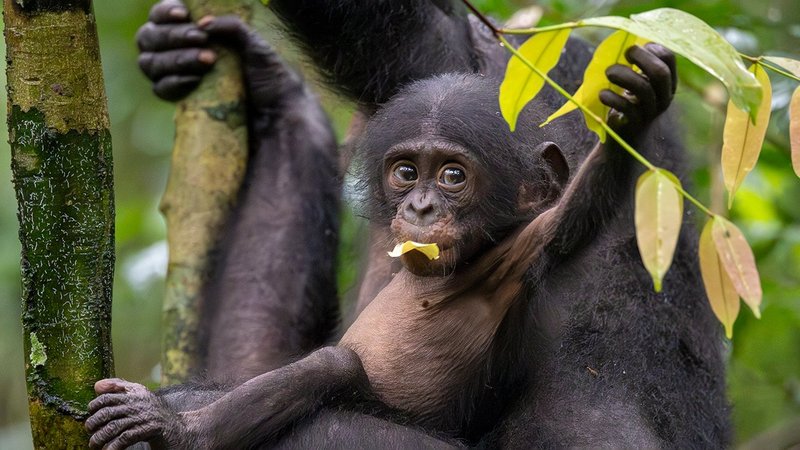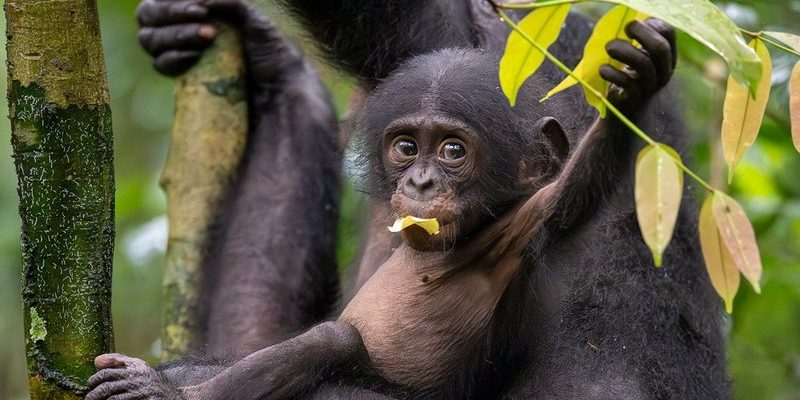
Bonobos are the closest relatives to humans, sharing about 98% of our DNA. They can be found primarily in the lush forests of the Democratic Republic of Congo. But here’s the catch: their habitats are shrinking, and their numbers are dwindling. This situation raises important questions about conservation efforts and what we can do to help. Think of bonobos as a delicate thread in the tapestry of global biodiversity. If that thread unravels, the entire fabric of our ecosystem could be affected.
What Makes Bonobos Unique?
Bonobos are often mistaken for chimpanzees, but they possess distinct traits that set them apart. For one, their social structures are matriarchal, meaning that females often lead groups and play a significant role in decision-making. This is quite different from the more male-dominated structures seen in chimpanzees.
Social Behavior
Bonobos are known for their peaceful interactions, using sex as a way to resolve conflicts and build relationships. This behavior can seem puzzling, but it highlights their fascinating social dynamics. While chimpanzees might resort to aggression, bonobos prefer a more harmonious approach, often engaging in social grooming and playful activities.
Intelligence
Like humans, bonobos have shown remarkable intelligence. They can communicate through facial expressions, gestures, and even tools—a trait we usually associate with human beings. These skills give them an edge in adapting to their environment, which is another reason to pay attention to their plight.
The Bonobo Habitat and Its Threats
Bonobos reside mainly in the rainforests of the Congo Basin, a vital ecosystem that is as rich as it is threatened. These lush forests provide not only food and shelter for bonobos but also for countless other species. Sadly, human activities are wreaking havoc on this delicate environment.
Deforestation
One of the biggest threats to bonobo populations is deforestation. The logging and agricultural industries are rapidly encroaching on their habitats, leading to habitat loss. As trees are cut down, bonobos are forced to flee their homes, making it harder for them to find food and mates.
Illegal Hunting
Hunting for bushmeat is another critical issue. In many areas, bonobos are hunted for food, which threatens their survival. Sadly, this practice is often driven by poverty and lack of resources, making it a complex problem to tackle.
Current Conservation Efforts
Fortunately, there are ongoing conservation efforts aimed at saving the bonobo. Various organizations are working tirelessly to protect their habitats and educate local communities about the importance of bonobos.
Protected Areas
Several reserves and national parks have been established in the Democratic Republic of Congo. These protected areas help safeguard bonobos and their habitats from deforestation and hunting. By limiting human access to these regions, conservationists aim to create safe havens for bonobos to thrive.
Community Engagement
Education plays a crucial role in conservation. Many organizations focus on engaging local communities, creating programs that promote sustainable practices. This not only helps protect bonobos but also improves the livelihoods of the people living nearby. For instance, eco-tourism initiatives allow locals to benefit economically from protecting wildlife rather than exploiting it.
The Role of Zoos and Rehabilitation Centers
Zoos and rehabilitation centers play a significant role in preserving bonobos. They provide shelter for orphaned bonobos and those rescued from illegal trade.
Captive Breeding Programs
Many zoos participate in breeding programs to boost bonobo populations. These programs aim to maintain genetic diversity and create a safety net for the species. Eventually, the goal is to reintroduce healthy bonobos into the wild, ensuring they can once again roam their natural habitats.
Public Awareness
Zoos also help raise public awareness about the plight of bonobos. Through educational exhibits and programs, they inform visitors about the threats facing these primates. By fostering empathy and understanding, they inspire action and support for conservation efforts.
What Can Individuals Do to Help?
Now that we know about the challenges facing bonobos and the efforts to protect them, you might be wondering how you can make a difference.
Support Conservation Organizations
Consider donating to or volunteering with organizations dedicated to bonobo conservation. Your support can help fund research, habitat protection, and community engagement initiatives. Even small contributions can make a big impact.
Spread Awareness
Share information about bonobos and their conservation needs with your friends and family. The more people know, the more likely they are to take action. You can use social media platforms to reach a broader audience and educate others about the importance of protecting this incredible species.
So, is the bonobo endangered? Yes, they face significant threats that jeopardize their survival. However, with increased awareness, conservation efforts, and community engagement, there’s hope. Bonobos are more than just fascinating animals; they are a vital part of our planet’s ecological balance. By working together, we can ensure that future generations will have the chance to appreciate these unique creatures in the wild. Let’s take action now because every little effort counts in the fight to protect the bonobo and their home.

